Family : Orchidaceae

Text © Prof. Pietro Pavone

English translation by Mario Beltramini
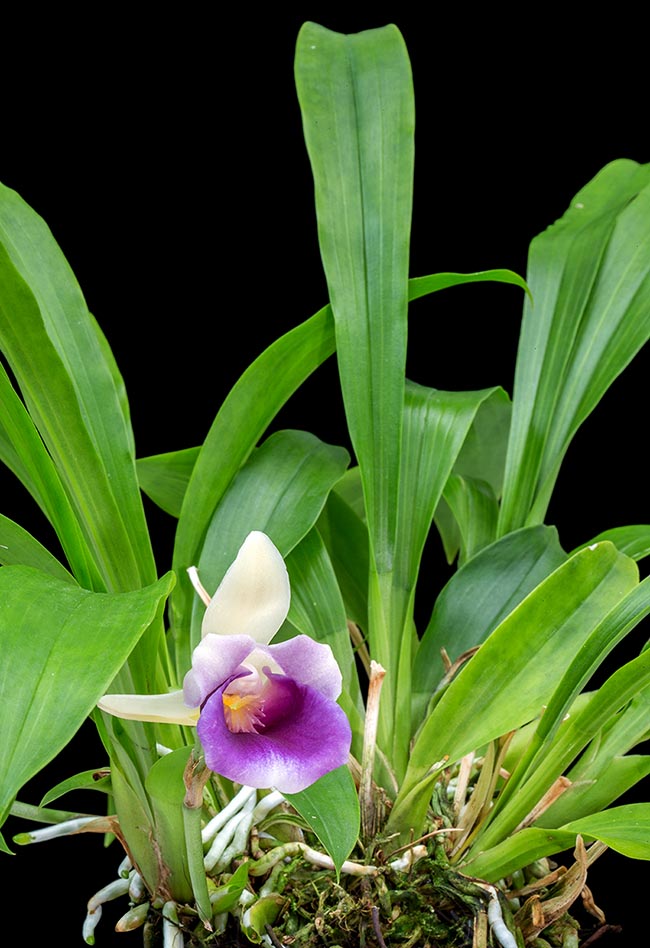
Warczewiczella discolor is a small Central American rhizomatous epiphyte about 34 cm tall © Giuseppe Mazza
Warczewiczella discolor (Lindl.) Rchb.f. (1852) is a species belonging to the Orchidaceae, subfamily Epidendroideae, tribe Cymbidieae, subtribe Zygopetalinae.
This species is found in Costa Rica, Cuba, Honduras, Panama, Colombia, Venezuela and Ecuador.
It is an epiphyte growing on the trunks and on the branches of the trees of the lower level of the rainforest, normally, at altitudes between 700 to 1850 metres, at times up to 2300 m of altitude.
Warczewiczella discolor has been described by Heinrich Gustav Reichenbach (1823-1889) in Bot. Zeitungs (Berlin) 10:636 (1852).
Previously, it was included, in synonymy, in the genus Cochleanthes, but studies with molecular markers, on plants belonging to the genera of the subtribe Zygopetalinae of central and southern America, have confirmed that Warczewiczella, within the cladogram, is actually distant, and therefore well distinct, from Cochleanthes,
Reichenbach, worthy successor of the English botanist John Lindley (1799-1865) has been the leading world authority on the orchids and a great orchidologist of all time.
Many species of orchids, coming from many countries, have been nominated and described by himself.
He was professor of botany at the Royal Saxon Academy of Forestry in Tharandt, then in Leipzig and finally, from 1863 to 1889, director of the Botanical Garden of Hamburg University.
When young, he helped his father, Heirich Gottlieb Ludwig, well-known zoologist and botanist, author of important works excellently illustrated.
Reichenbach honoured the Lithuanian Josef Warscewicz Ritter von Ravicz (1812-1866), great traveller and naturalist who at an early age joined the staff of the Botanical Garden of Vilnius and in 1840 began to work at the Botanical Garden of Berlin.
In 1845 he was hired by the Belgian horticulturist Louis Benoit van Houtte (1810-1876) as collector of exotic plants. Initially he was despatched to Saint Thomas (Lesser Antilles) and from 1848 to 1853, in South America introducing in the greenhouses of van Houtte hundreds of unknown plants, mainly orchids.
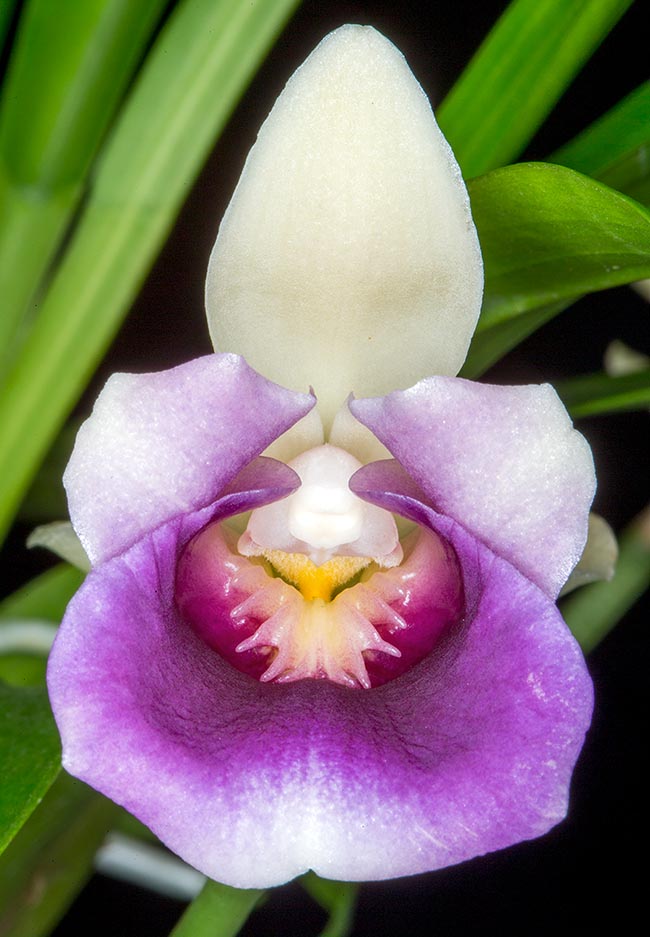
As the scientific name states, sepals, petals and labellum have various colours with cream white fading into purplish © Giuseppe Mazza
Upon his forced return in Europe, due to the yellow fever, he became inspector (head gardener) of the Botanical Garden of the Jagiellonian University of Krakow and upon his death his herbaria, as per his own will, were given to the Botanical Garden of Berlin.
The German botanist Johann Friedrich Klotzsch (1805-1860) honoured him the species Warszewiczia coccinea (Vahl) Klotsch (1853), of the family Rubiaceae, by him imported in Europe.
Reichenbach, being unable to utilize the same generic epithet, added the diminutive –ella, thus creating. the genus Warczewiczella.
However, he did not notice that in the original publication, by mistake, he proposed Warczewiczella and notWarscewiczella as he should have done based on the last name Warscewicz.
Nowadays it is not any more possible to correct this oversight because the Botanical Nomenclature Code does not allow it.
The specific epithet is the Latin adjective discŏlor –oris, comp. of dis– and color “colour”, that is of different colour referred to the colours of the sepals, the petals and of the labellum.
In England, it is commonly called “Different colored Warczewiczella”.
Warczewiczella discolor is a small, about 34 cm tall, plant, perennial epiphyte, rhizomatous, with very short stems and without visible pseudobulbs.
The roots are fasciculate, simple, at times ramified, cylindrical, fleshy, 2,8 to 24 cm long with a diameter from 3 to 4,31 mm with white velamen with chloroplasts. The rhizome is cylindrical, creeping, 1,2 to 14 cm long, a diameter of 0,5-1 cm, having no scales with axillary buds, white-greenish, in helical arrangement.
The leaves (12,4-40,2 x 1,5-6,2 cm) are membranaceous, oblong-obovate, glabrous, glossy, imbricate, arranged in fan on the short stem, with flat lamina, entire margin and with well visible veins in the lower pagina.
The inflorescence, uniflorous, is axillary, $erect of hanging, 7 to 22,5 cm long with infundibuliform bracts. The flower is resupinate, very eye-catching, longitudinally striated with white, cream, butter yellow or green-yellowish elements., slightly falcate, with obtuse to sharp apex. The 2,2 to 4,8 cm sepals are of pale green colour and the lateral petals vary from 2,2 to 4,5 cm are cream greenish more or less marked or blue-violet shaded.
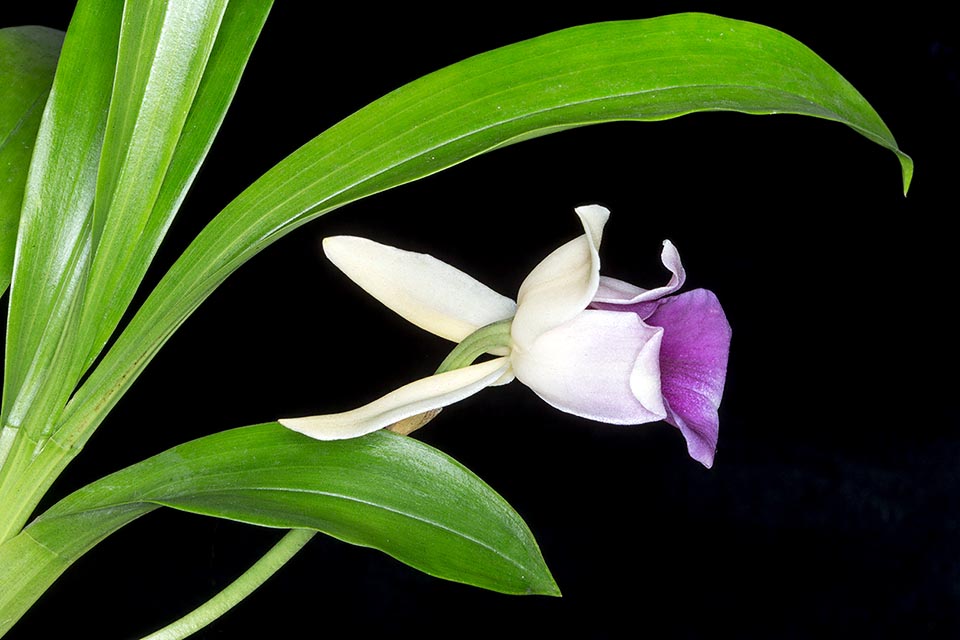
Flower seen from the side. The leaves may reach 40 cm of length © Giuseppe Mazza
The labellum is trilobate, concave at the base, 2,4-6,7 x 1,6-5,6 cm, almost uniformly coloured, of purple or bluish colour, burgundy violet, usually without lines or spots, with white margin.
The basal lobes are well defined and wrap totally or partially the column (or gynostemium), shorter than the central that is wide and extensive, entire or with wavy margins. The basal callus (8-10 x ca.8mm) may be circular, ellipsoidal or semi-square, free towards the apex, with some or many keels or grooves. The about 14 mm column has a green ovary, 0,9-2,2 cm long, and anther with two alveola, 4 pyriform pollinia, unequal and flattened.
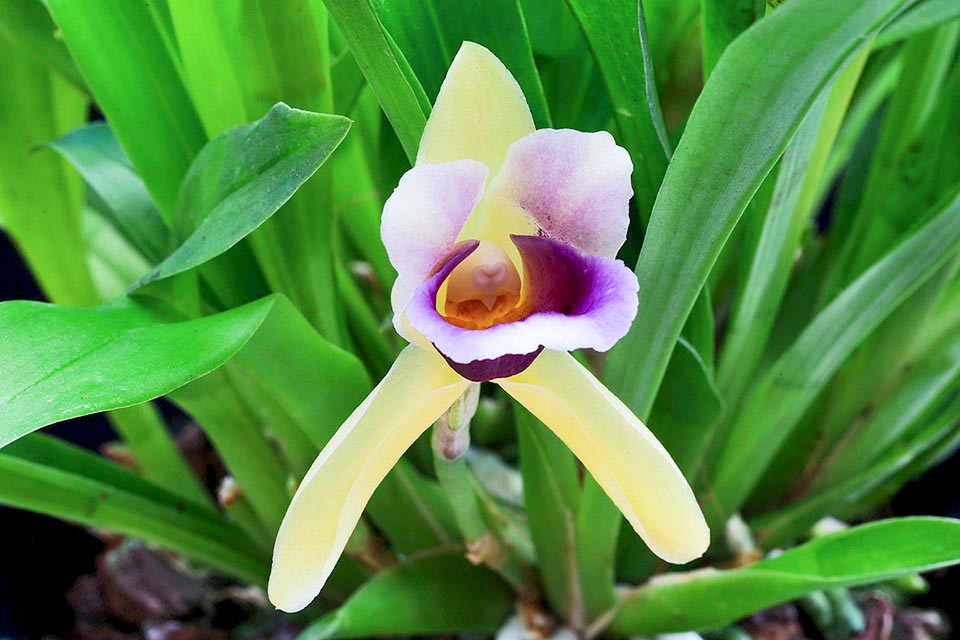
In this front view we note 3 showy yellowish sepals and the trilobed purple labellum, concave at the base, without dots or lines and white edged © Sylvia Kappl
The viscidium is hyaline, little differentiated from the stem, shaped like a shield.
The long-lasting flowers form in spring but may last till autumn. They are scented with a unique fragrance, similar to a mix of cedar wood and black pepper. The fruit, green .striated longitudinally, is a trilocular, dehiscent capsule.
In Costa Rica in the tropical humid biome has been found the hybrid × Cochlezella costaricensis, rare natural hybrid between Cochleanthes aromatica × Warczewiczella discolor.
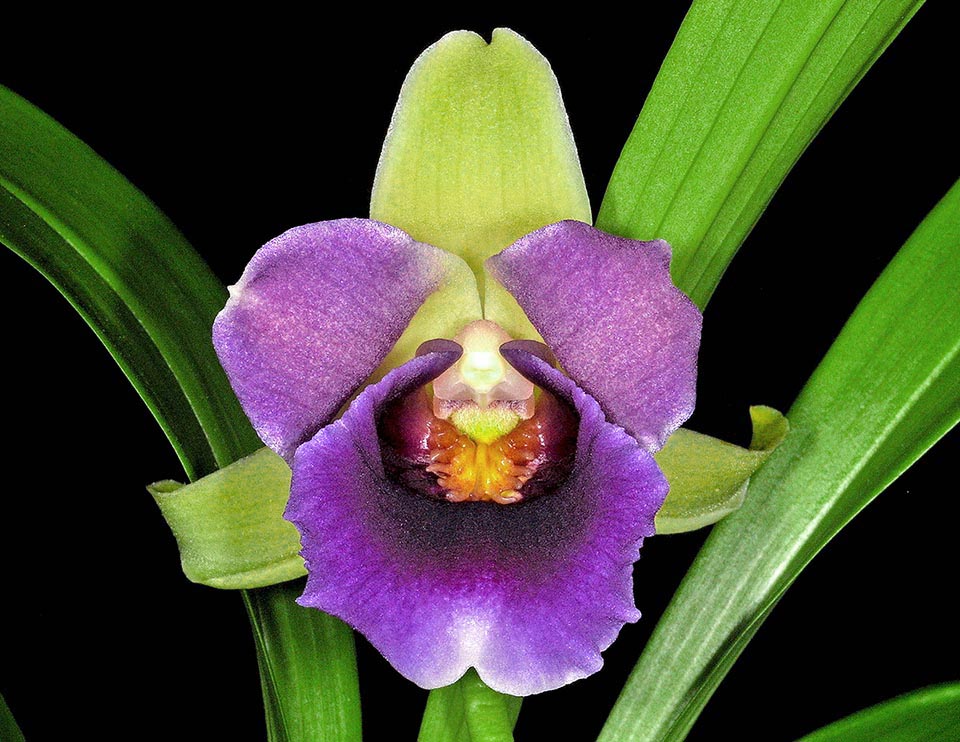
Species and cultivars are very much sought for by collectors due to the long lasting flowers with a unique scent, with notes of cedar wood and black pepper © Ron Parsons
There are many cultivars. We mention the last years awarded ones: Warczewiczella discolor ‘Dreieich’ (4 premi nel 2012); Warczewiczella discolor ‘Greentree’ (2 premi dal 1987 al 1997); Warczewiczella discolor ‘Augusta’ (2017); Warczewiczella discolor ‘Sparrows Point’ (2013); Warczewiczella discolor ‘Leroy’ (2010); Warczewiczella discolor ‘Eliza Maria’ (2010); Warczewiczella discolor ‘Cristina’ (2010); Warczewiczella discolor ‘Maty’ (2010); Warczewiczella discolor ‘Camilo’ (2007); Warczewiczella discolor ‘Natalia’ (2005); Warczewiczella discolor ‘Kristhofer’ (2003); Warczewiczella discolor ‘Woodland’s Indigo Blues’ (1998); Warczewiczella discolor ‘Black and Blue’ (1997); Warczewiczella discolor h.f. carnea ‘Gerardo Viquez’ (1997); Warczewiczella discolor h.f. aurea ‘Divino’ (1997); Warczewiczella discolor ‘Mendenhall’ (1990); Warczewiczella discolor ‘Lil’ (1989).
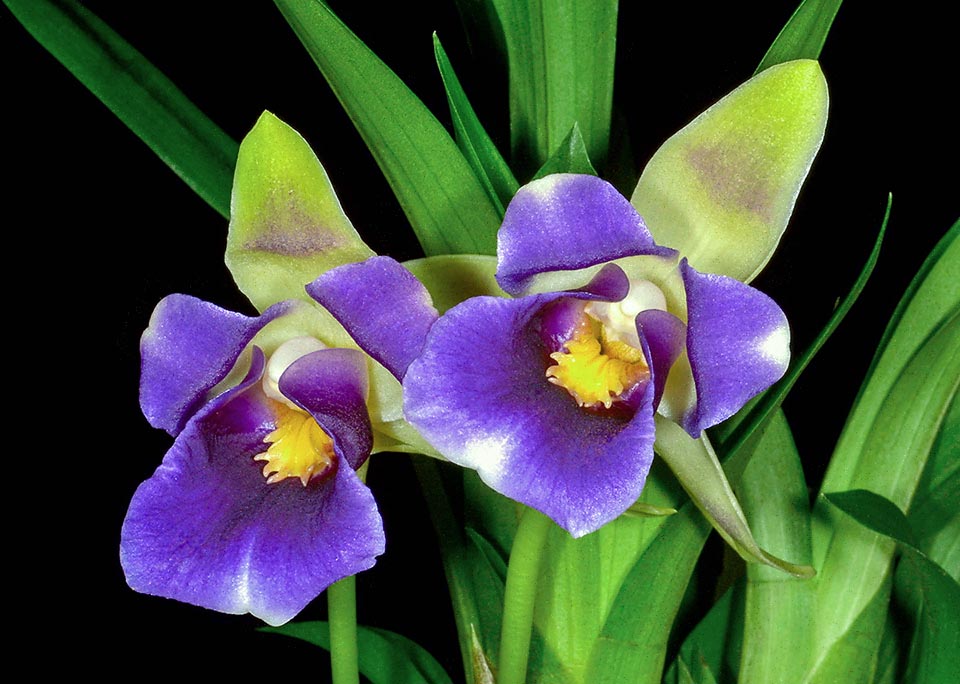
Warczewiczella discolor ‘Lil’ is a cultivar awarded in 1989 © Ron Parsons
In cultivation Warczewiczella discolor requires filtered light (12000-20000 lux) and continuous ventilation. It is a plant with moderate thermal requirements, in fact, in the origin sites the average day temperature is of 21-23 0C and the night one of 11-13 °C, a daily difference of 9-11 °C. In cultivation, in summer, and in early autumn, it needs a lot of humidity (80-85%), but in winter in in early spring the humidity must be reduced to no more than 70%.
It is good practice to cultivate it not in pots but in ample baskets with excellent drainage, filled up with a mix of tree fern fibres and cut sphagnum moss.
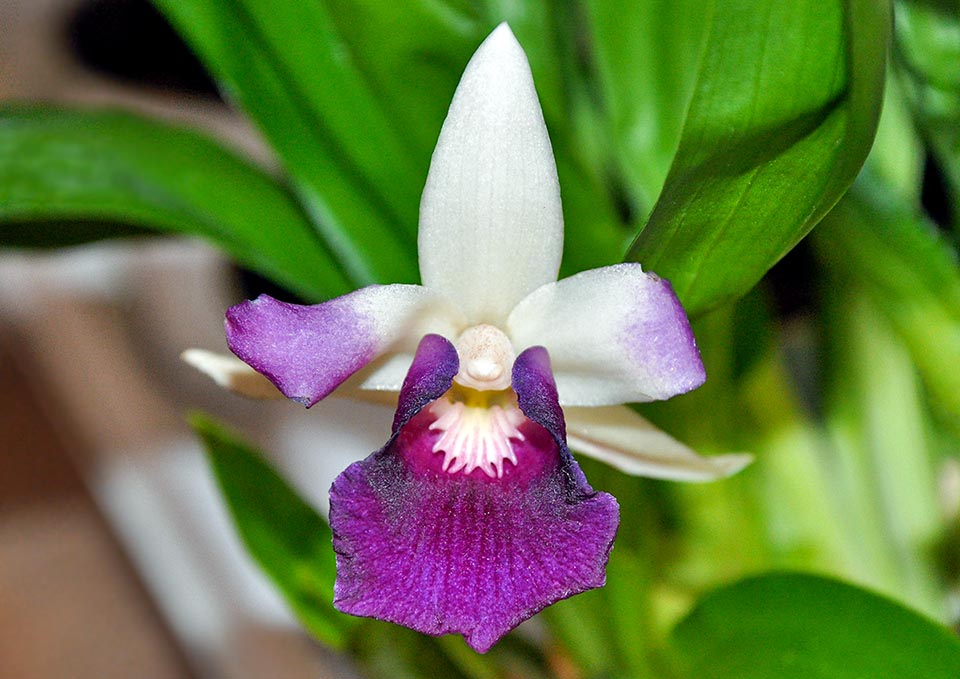
Primary hybrid obtained crossing Warczewiczella discolor x wailesiana © Stefano Pagnoni
Perlite may be added as it maintains the substratum transpiring and reduces its acidification.
When the substratum begins to decompose or when the plant grows out of the container, the repotting must be carried out, preferably when new roots begin to take form in a way to reduce the times of rooting.
While growing the plants are to be abundantly watered. By the end of autumn the quantity of water should be slightly reduced, but the plant must never be let dry.
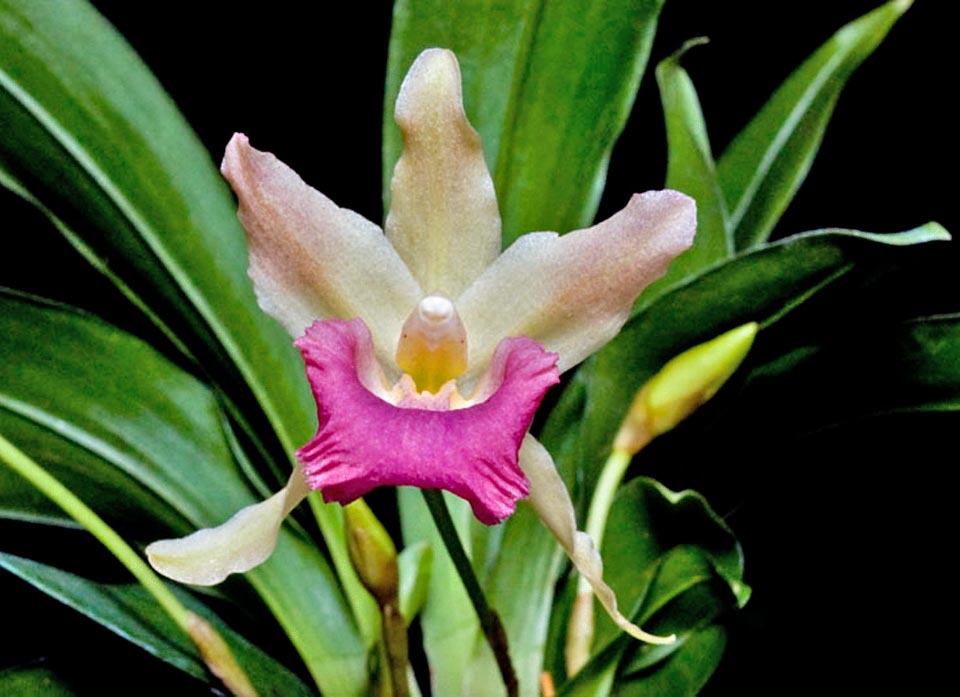
Kefericzella Leprechaun is the hybrid of Waerczewiczella discolor x Kefersteinia tolimensis © James C. Winner
With the irrigations can be added, biweekly, a fertilizer to an extent of 1/4-1/2 of the dosage recommended for orchids.
The fertilizer must have a high contents of nitrogen from spring to mid summer, after, and up to autumn, it is good to reduce the nitrogen and to slightly increase the contents of phosphorus.
Synonyms: Chondrorhyncha discolor (Lindl.) P.H.Allen (1949); Cochleanthes discolor (Lindl.) R.E.Schult. & Garay (1959); Warrea discolor Lindl. (1849); Zygopetalum discolor (Lindl.) Rchb.f. (1863).
